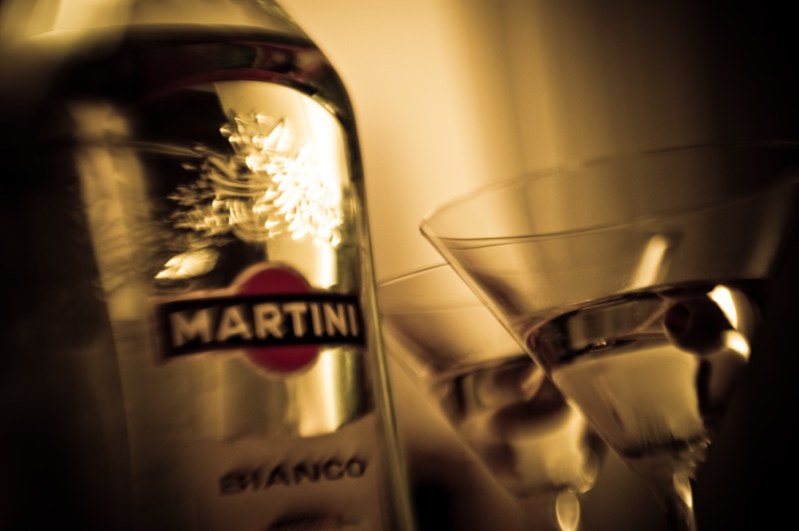Vodka or gin? If you’ve ever ordered a martini at a cocktail bar, you’ve probably been asked this question, and chances are your mind was already made up before you walked in the door. These two spirits look identical in a glass, and are often substituted for one another in cocktails like the martini, the collins, the gimlet, and with tonic. They’ve got plenty in common, but once you take a sip there’s no mistaking one for the other, and drinkers on both sides of the divide have strong opinions about which is better. So what’s the difference?
Related Guides
A Tale of Two Spirits
The first — and maybe most important — difference between gin and vodka is etymological. The precise origins of vodka remain murky, but the word derives from the Slavic for “water” (voda), and “vodka” first appeared in print in a 15th-century court document in Poland, where it had become an important export. Gin’s name comes from the English “genever,” which derives from the Latin word for juniper, an ingredient that was and remains a mainstay of its flavor. So from their very beginnings, these two spirits were distinct in what their names emphasized: vodka’s resemblance to water and gin’s most pungent ingredient.
Like most spirits, both vodka and gin began their lives as medicine. Early alchemists experimented with distillation in an effort to purify natural substances, and boiling beer and wine resulted in a spirit which was thought to have salubrious effects on the body, ranging from curing illnesses to increasing libido (seems like they were on to something). But different regions arrived at their own recipes. Vodka made its way from Poland to Russia as medicine in the 1500s, and Italian monks were infusing spirits with the medicinal herb juniper as far back as the 11th century. As the science of distillation was perfected and the practice became more widespread, people began to realize that following the doctor’s orders was an awful lot of fun.
Modern Styles
The popularity of gin and vodka may have started as an extra dose of medicine, but by the 18th century alcohol had entered the realm of recreation, and along with its increased popularity came increased regulations from governments trying to cash in while keeping their citizens safe–poorly-distilled gin was responsible for a number of deaths in England, and its extra flavor came in handy covering up poor distillation methods. These new rules meant that both gin and vodka had to be defined within certain parameters, and those early differences in their names came in handy.
Nowadays, vodka may be distilled from any plant matter with sufficient starch for fermentation, and it’s most commonly made from grains like wheat (Grey Goose), corn (Tito’s), and rye (Belvedere). It must be distilled to 80 proof, or 40% alcohol, and according to the Alcohol, Tobacco, and Firearms Code it must be distilled until it is “without distinctive character, aroma, taste, or color.” Essentially, until it resembles water (in everything but price).
The same document requires that gin be a neutral spirit bottled at no less than 80 proof whose predominant flavor is derived from — you guessed it — juniper berries. Like vodka, it can be distilled from a range of materials, and is divided into three categories: London Dry, Holland Gin, and Old Tom.
London Dry gin isn’t necessarily from London, but it is distilled with natural botanicals (meaning no artificial flavors) like juniper, anise, coriander, and lemon peel. It’s also usually bottled at a slightly higher proof than vodka. Unlike vodka brands, which tout their base materials and filtration methods, the biggest differences between brands of London Dry gin are in their proprietary blend of botanicals. Plymouth, Beefeater, and Tanqueray are all popular examples of the London Dry style.
Holland Gin, or Genever, must be distilled from grains like malted barley. It must also include juniper, and often other botanicals, but unlike London Dry gin, Genever can be aged, which means it’s often compared more to whiskey than gin. Bols makes both an aged and an un-aged version.
Old Tom gin falls somewhere in the middle of these two styles. It must also contain juniper, but beyond that anything goes. Some versions are aged, others are lightly sweetened, and some throw in funky herbs and spices. Plenty of craft distilleries have taken an artsy stab at their own Old Tom, like Barr Hill’s Tomcat Gin which is aged in new American oak.
What Does It All Mean?
Legal and historical hoopla aside, the major difference between vodka and gin is botanicals. Gin’s got ’em, vodka doesn’t. This is what gives gin its distinctively bracing flavor that some people find delightful and others liken to paint thinner. Vodka, on the other hand, is meant to be pure, the “water of life,” unsullied by earthly adjectives like color, odor, and flavor. In its Slavic home countries vodka is traditionally served neat, straight from the freezer.
When you’re mixing a cocktail with vodka, it’ll play nice with everybody. It fades into the background, letting other ingredients shine. Gin tends to play a starring role, making certain gin mixers better than others. Ultimately, it doesn’t matter which you choose, as long as you’re drinking something you like.




